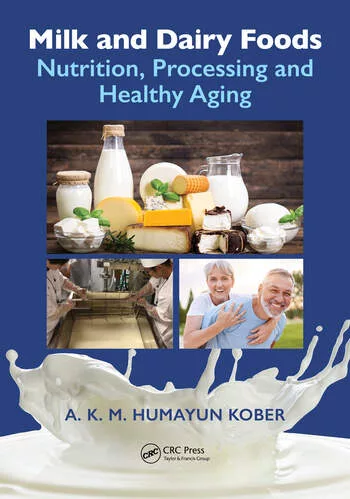A healthy serving of juice innovation
Juices blend with other flavors, drink types for use throughout the day
They say “an apple a day keeps the doctor away,” and according to new research, so does a bottle of 100 percent fruit juice. A report from the University of California at Davis shows that 100 percent fruit juices could have protective health benefits similar to those of whole fruits. The report found a positive association between consumption of 100 percent juices and reduced risk of cancer, cardiovascular disease and decreased cognitive function. Additionally, 100 percent juices are linked to heightened antioxidant activity, the report states.
One of the top reasons shoppers buy juice drinks is for their better-for-you attributes, says Sarah Theodore, global drinks analyst for Mintel Food & Drink, Chicago. For instance, many juice brands feature no-sugar-added claims or are fortified with vitamins, she notes. Almost half of U.S. consumers who buy 100 percent juices look for no-sugar-added varieties, according to Mintel’s January 2011 “Juice and Juice Drinks” report. And,40 percent of people who buy 100 percent juices look for vitamin- or nutrient-enhanced formulations.
This past fall, The Coca-Cola Co., Atlanta, launched a new line of orange juices under the brand name Minute Maid Pure Squeezed. The line is available in four varieties: No Pulp 100 percent Orange Juice, No Pulp 100 percent Orange Juice with Calcium and Vitamin D, Some Pulp 100 percent Orange Juice, and Light Orange Juice Beverage with Calcium and Vitamin D. Two of the varieties are fortified with vitamins and minerals, one of which contains fewer calories and sugar than the others. Minute Maid Pure Squeezed Light Orange Juice Beverage with Calcium and Vitamin D, which contains 50 calories in each 8-ounce serving, offers 50 percent fewer calories and sugar than Minute Maid Pure Squeezed 100 percent Orange Juice, the company says. Plus, its light formulation reflects a larger trend in the juice category.
Keep it light
The main trend in the juice category is lighter drinks, says Richard Hall, founder and chairman of Zenith International, Bath, U.K.
In addition to its all-natural Izze sparkling juice line, PepsiCo subsidiary Izze Beverage Co., Boulder, Colo., offers a line of lighter, lower-calorie sparkling juices under its Izze Esque brand name. Last year, the company introduced a new Sparkling Watermelon flavor that contains 25 percent fruit juice, 50 calories and fewer than 14 grams of sugar. The new flavor joined Sparkling Black Raspberry, Sparkling Limon and Sparkling Mandarin flavors.
Ranking third on Chicago-based SymphonyIRI’s list of the top refrigerated fruit drinks is Purchase, N.Y.-based PepsiCo’s Trop50 brand. Trop50 increased its dollar sales by 34 percent compared to the previous year ending Oct. 2 in supermarkets, drug stores, gas and convenience stores, and mass market retailers excluding Walmart, according to SymphonyIRI data. Last summer, the brand added Lemonade and Raspberry Lemonade varieties to its lineup. The new varieties offer 50 percent fewer sugar and calories than regular lemonade and use the all-natural, zero-calorie stevia-based sweetener PureVia. Trop50 also is available in Pomegranate Blueberry, Pineapple Mango, Farmstand Apple, and Orange with Calcium and Vitamin D, all of which are a good source of vitamins C and E, the company says.
Part of the wellness trend, natural juices and juice drinks are in high demand, says Mintel’s Theodore. Additionally, shoppers who buy 100 percent juices are more likely to seek out organic juices than those buying juice drinks, Mintel’s juice report states.
“Clearly, when consumers purchase 100 percent juice, they expect its nutritional quality to be higher than juice drinks,” the report notes. “Therefore, 100 percent juice manufacturers could gain consumer trust by putting the all-natural, no-preservative [or] vitamin-enhanced seal on the packaging.”
Frubob USA Inc., Brandon, Fla., placed a graphic front and center on its Frubob fruit float bottles calling out the products’ 100 percent real fruit pieces and real fruit juice. Frubob also follows other juice trends because it’s fortified with vitamins C and D, contains fewer than 100 calories in each serving, and offers two servings of fruit in each bottle. Recently, the brand introduced a Strawberry flavor to its lineup, which also includes Peach, Pineapple, Mango and Strawberry-Banana.
Although better-for-you attributes and natural claims round out the Top 3 juice trends, price takes the No. 1 spot, Mintel’s Theodore says.
“It probably comes as no surprise, but price is very important to consumers right now,” she says. “Across the board, whether you’re talking about 100 percent juice or juice drinks, a low price is the most important attribute in choosing a product.”
Three-fifths of all juice and juice drink buyers look for low price when shopping, which suggests that any price increases from manufacturers might cause consumers to move away from that particular brand, according to Mintel’s juice report. To reduce shoppers’ focus on price, the report advises juice and juice drink manufacturers to communicate their brand’s value proposition and special characteristics, such as a functional aspect, drinking experience or unique flavor.
Favorite flavors
Consumers are more willing to try new fruit blends, however, straight orange and apple juices are still the most popular, notes Zenith’s Hall.
Mintel’s Theodore agrees, adding that cranberry and fruit punch join orange and apple juices in the Top 5 varieties. She also points out that superfruit juices saw a decline in 2011.
“The number of new products using pomegranate as a flavor is about half of what it was in 2010, and the number of mangosteen-flavored products has declined quite dramatically as well,” she says. “Some of that could be due to price: superfruit juices are generally priced higher than traditional juices. It could also be that superfruit consumers are more experimental and have simply moved on to other flavors.”
Nevertheless, Los Angeles-based Pom Wonderful LLC’s superfruit juice was No. 1 on SymphonyIRI’s list of all other refrigerated fruit juices for the 52 weeks ending Oct. 2, 2011, in supermarkets, drug stores, gas and convenience stores, and mass market retailers excluding Walmart. The brand saw a 6 percent increase in dollar sales compared to a year ago in this category. It also ranked No. 4 in the refrigerated blended fruit juice category and No. 1 in the refrigerated cranberry juice/cranberry juice blend category, according to SymphonyIRI data.
Product repositioning
From 2008 to 2010, consumption of juice and juice drinks has remained the same in U.S. households, according to Mintel’s juice report. Consumption of orange juice, however, decreased significantly from 2006 to 2010. To increase juice consumption, beverage-makers need to get creative, the market research firm suggests. It recommends positioning juices as a healthy alternative to sports drinks, or creating crossover products, such as fruit juice-based energy drinks and fruit juice-based teas.
“Juice adds a natural element to a product, so juice-based products have the potential to appeal to different groups of consumers,” Theodore says.
Last summer, The Campbell Soup Co., Camden, N.J., launched V8 V-Fusion + Energy drinks and V8 Energy Shots. The energy drinks blend fruit and vegetable juices with green tea. Each 8-ounce slim can contains 80 mg. of caffeine, which is comparable to the leading energy drink in the market, the company says. They also contain B vitamins, do not have any added sugar, and contain 50 calories. V8 Energy Shots also combine nine types of fruit and vegetable juices with green tea extract, but add vitamins A, C and E, and vitamins B1, B2, B3, B6 and B12. The 2.5-ounce energy shots contain as much caffeine as an 8-ounce cup of coffee, the company says.
“We are branching into the energy drink market with the kinds of nutritious beverages that V8 is known to deliver,” said Dale Clemiss, vice president of V8 Beverages, in a statement. “People can now feel good about drinking an energy drink or shot with a combined serving of vegetables and fruit and powered naturally by green tea.”
Similarly, Seattle-based Starbucks Coffee Co. introduced Starbucks Refreshers, which are juice-based energy drinks made with green, unroasted coffee beans. The low-calorie drinks come in Strawberry Lemonade, Orange Melon and Raspberry Pomegranate flavors.
Looking to reinvent the super-premium juice segment, Starbucks recently acquired Evolution Fresh Inc., which offers “never heated” juice products.
“Using high-pressure pasteurization to help ensure the inherent nutrients are kept intact during the juicing process is a key point of differentiation for a growing number of our juices,” said Jimmy Rosenberg, founder and chief juice officer of Evolution Fresh Inc., in a statement.
Starbucks not only plans to expand the brand’s distribution and offer its brands in Starbucks stores, it also intends to introduce a new health and wellness retail concept that will further redefine the super-premium juice category and experience for consumers, the company says.
“Our intent is to build a national health and wellness brand leveraging our scale, resources and premium product expertise,” said Howard Schultz, Starbucks chairman, president and chief executive officer, in a statement. “Bringing Evolution Fresh into the Starbucks family marks an important step forward in this pursuit. Over the last year-and-a-half, we have looked comprehensively at possible opportunities and chose Evolution Fresh because it stood above anything else in terms of premium quality, nutrition and potential for growth.”
Emerging trends
Beyond functional ingredients and fruit blends, the juice category has seen the proliferation of aloe juice and coconut water within the juice drinks category.
“The number of juice introductions containing aloe vera as a flavor component has almost doubled since last year,” Mintel’s Theodore says. “In some cases, these products are straight aloe juice; in others, aloe is being blended with other juices.”
Combining the two trends, San Francisco-based SPI West Port Inc. launched Alō Coco Exposed, which blends aloe with coconut water and other juices.
While it’s clear that coconut water has increased in popularity during the last couple of years, it has an acquired taste that might not appeal to everyone, says Ty Law, U.S. research associate for Euromonitor International, Chicago.
“One hurdle for growth will be that the flavor of pure coconut water is not appealing to all Americans,” he says. “Because of that, we have been seeing growth in coconut water-blended juices and smoothies. Manufacturers are trying to update their juice blends or smoothies to be able to market the health benefits provided by coconut water.”
The Coca-Cola Co. subsidiary Odwalla launched a new line of Smoothie Refreshers this past fall that are formulated with coconut water for a light texture and low calories. One serving contains 150 calories. The flavors available are Mango Lime Twist, Mixed Berry Shuffle and Pear Berry Jive.
“I still believe that low calories will be important in terms of functionality, which is also why coconut water will be important,” Law says. “Blending it with other fruit juices will actually lower the calories as it has fewer calories than your typical orange/apple juice. But by using coconut water instead of water, the product can still be marketed as 100 percent juice.”
Vita Coco, based in New York City, launched Vita Coco Tropical Fruit last summer, which combines coconut water and pink guava, orange, red dragon fruit and pineapple juices.
Stepping outside the box, Hermosa Beach, Calif.-based Zico Beverages launched a Chocolate coconut water in 2011 that has become its No. 2 best-selling product, it told Beverage Industry in its December 2011 cover story. It also offers Pineapple, Mango, Lima Citron, Pomberry, Passion Fruit and Natural — its No. 1-seller — varieties. BI
Looking for a reprint of this article?
From high-res PDFs to custom plaques, order your copy today!





